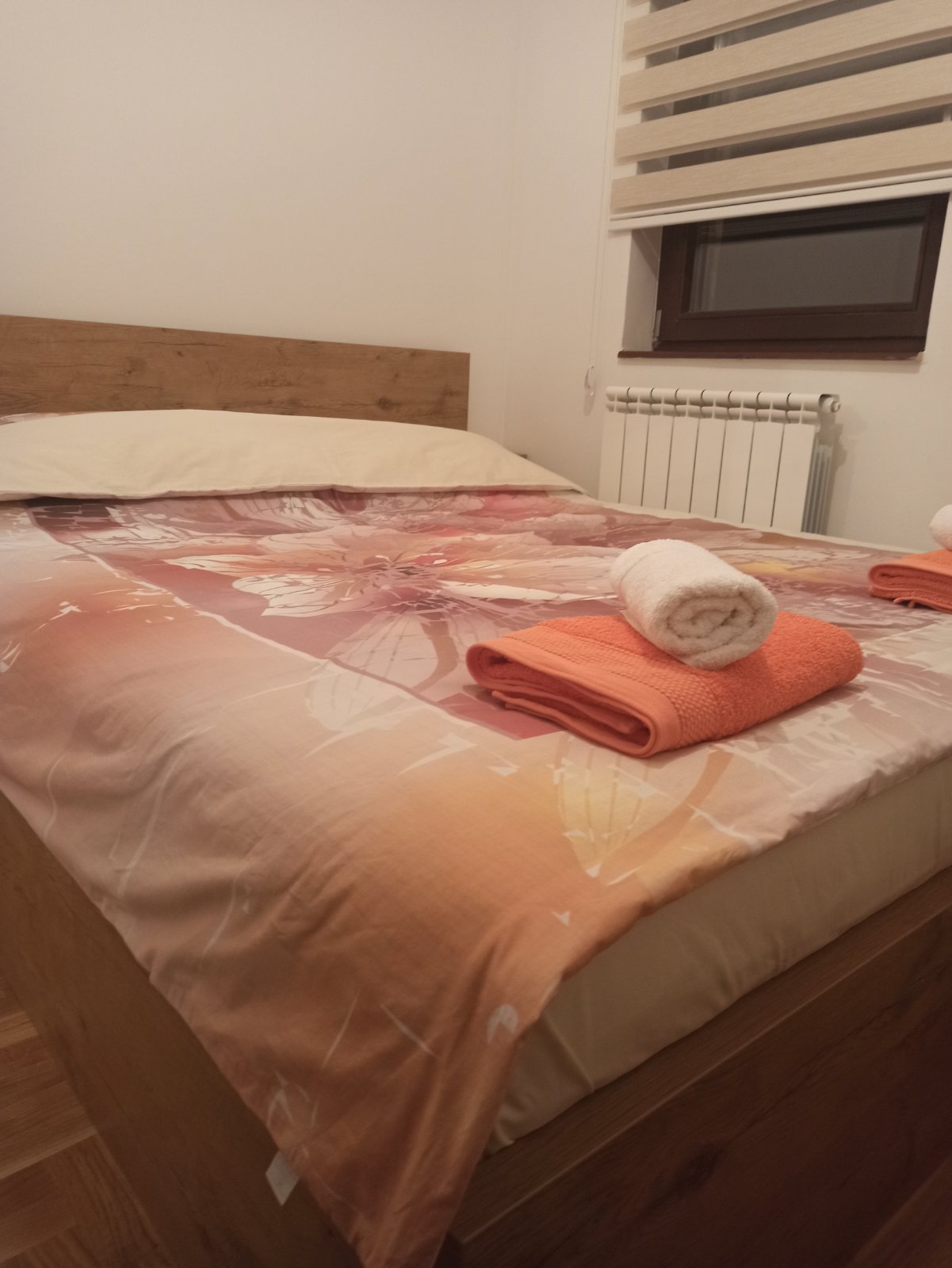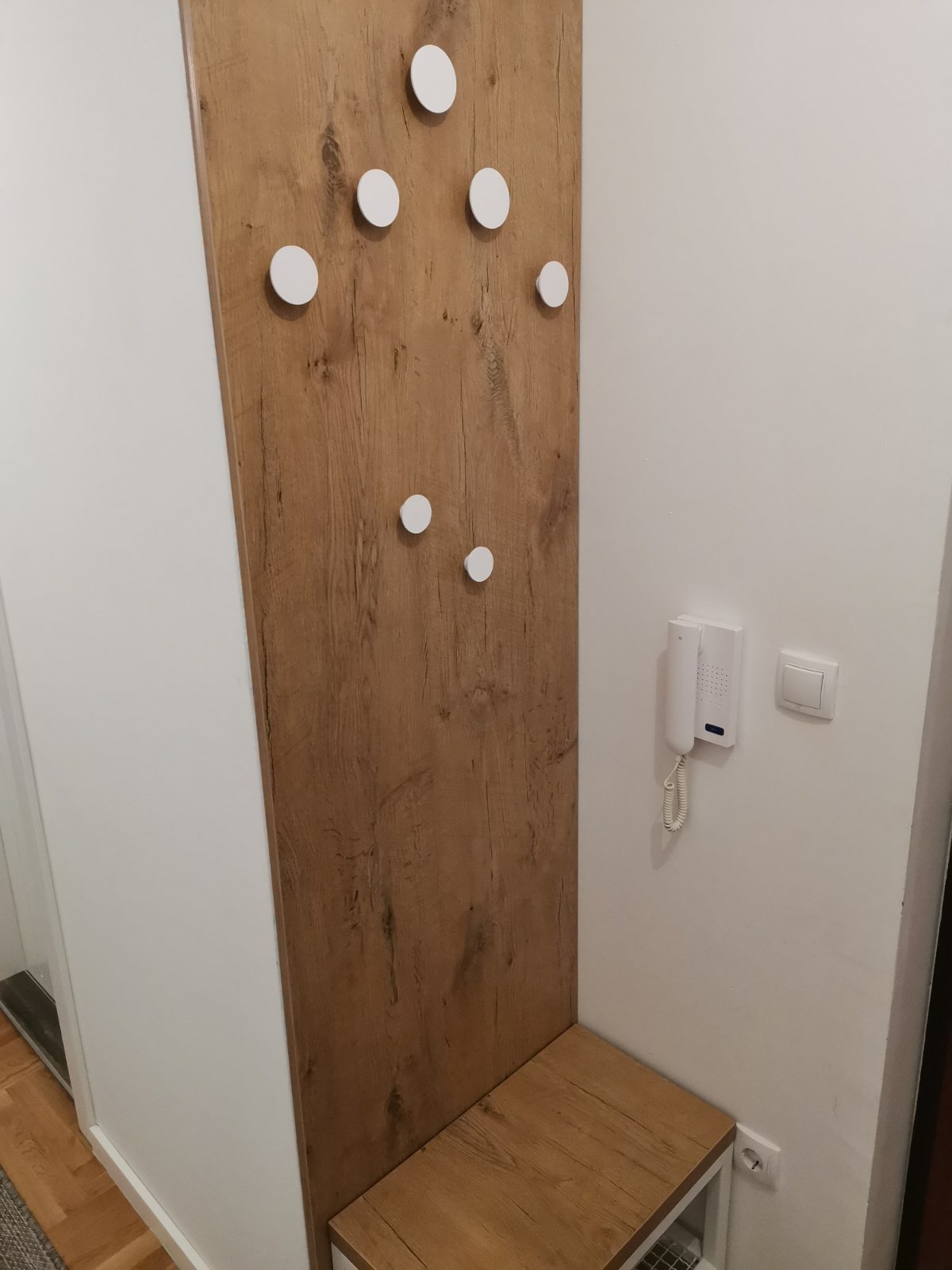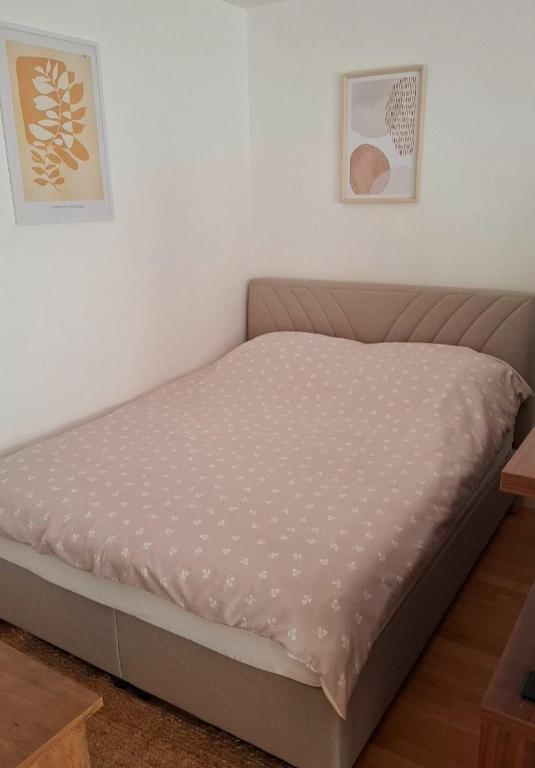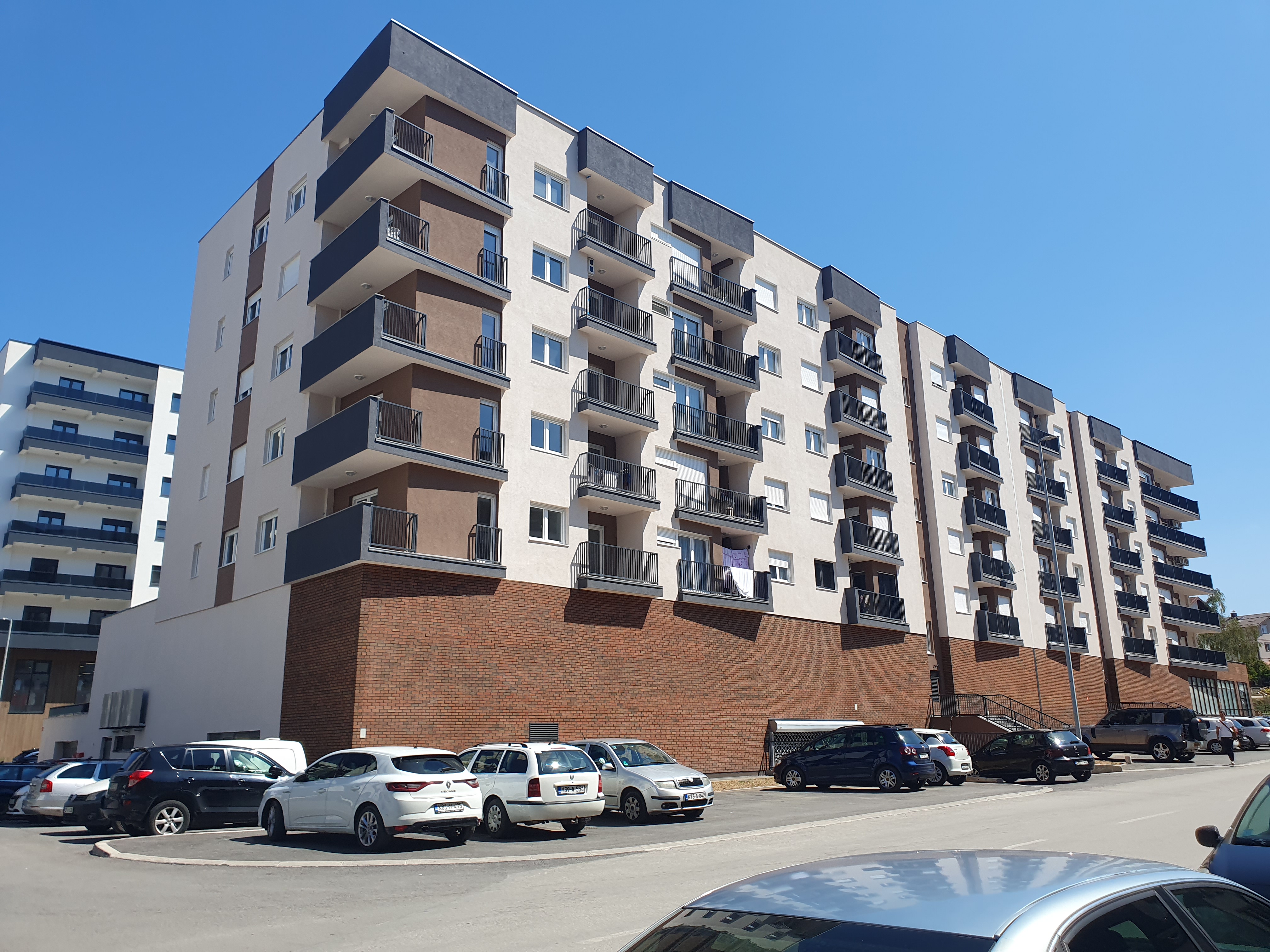When to visit Sarajevo?
- Visit Sarajevo in summer periods - It is very well known that Sarajevo is a city with a rich culture and spirit. This is especially nice in the summer when you can walk through Baščaršija and the streets of this city and sit in a nearby cafe for homemade coffee and ratluk, which is accompanied by a conversation with many locals. The advantage of nice weather is the possibility of easier movement and visiting the surrounding destinations.
- Visit Sarajevo in winter - However, located in the Balkans, Sarajevo is a winter city, suitable for tourists. Hilly Bosnia is an ideal place for skiers, and Sarajevo, given its good positioning, is an excellent starting point and resting place for all who are eager to visit the mountains, and the surroundings of the city are the world-famous Olympic Mountains. Beautiful winter landscapes, peaceful evenings next to the frozen Miljacka, and great food are just some of the reasons why you should visit Sarajevo in winter.
How to get to Sarajevo?
- The most frequently used road is when you go northwest from Belgrade and join the Belgrade-Zagreb highway. Then, before Sremska Mitrovica, turn off the highway and turn left towards Bogatići on Route 20, then continue on Route 26 towards Loznica and Mali Zvornik. From there you join the M19 road passing through Vlasenica, Han Pjesak, and Sokolac. Finally, take the E761 / M19 road, enter Sarajevska Street following the M5 road, and continue towards the center of Sarajevo.
- The shortest way is from Belgrade by highway to Ruma, so turn towards Šabac, and continue on the same road through Loznica, Vlasenica, Han Pjesak.
- If you like to travel by highway, there is a route through Croatia, but it is convincingly the longest (about 350 kilometers). From Belgrade, take the highway via Ruma and Batrovac, enter Croatia and continue by highway all the way to Županja, then turn left towards Orašje towards Brčko, and from there take the R458 towards Tuzla, following the M18 all the way to Sarajevo.
If you are not a driver or you would like to completely relax and not think about anything on this trip, there is a van transport that is available throughout Serbia and transports you from your address to the exact address in Sarajevo. The advantage of this type of transport is that you can choose the date and time of departure and return. You will find a lot of proven van carriers on the Internet, and the price of transportation to Sarajevo for all of them is 30 euros one way, or 60 euros with a return ticket.
Air transport to Sarajevo
In addition to this, you can also visit Sarajevo by plane, and ticket prices vary, so it would be better to book your tickets in advance. Sarajevo has its own airport and you can fly from Belgrade or Nis. The price usually ranges from 60 euros and up, but your trip will be very easy and you will have more time to enjoy the city itself. Before leaving, it is best to inform yourself.
Activities for tourists in Sarajevo
- Walking tours: If you like walking and exploring, and you are also a history lover, Sarajevo is the perfect place for you all year round, especially in summer. This city offers numerous walking tours to the surrounding places such as Travnik and Jajce, a tour of the Bosnian pyramids, a tour of Mostar, and other interesting places. In addition to all this, there are many interesting tours within the city itself, where historically important places and museums are visited, mostly related to the First World War and the Sarajevo assassination.
- Skiing: If you come to Sarajevo in winter, there are also many activities that are ready for you. Sarajevo is surrounded by the Olympic Mountains and it takes half an hour from the city center to reach them, so if you are interested in skiing or just exploring the mountains and enjoying the mountain air, this is a great opportunity for you. Also, if you happen to be during the holidays in this city, we recommend the Christmas tour that takes you to the most beautiful and fairytale places in Sarajevo.
- Everyday activities: Regardless of the period of your tour of Sarajevo, we recommend walking around the city and soaking up its energy, visiting one of the local cafes, restaurants or visiting the Escape Room, an activity that is becoming increasingly popular in the capital of Bosnia and Herzegovina.
Events and festivals in Sarajevo
- Baščaršija Nights is an international summer cultural festival, which is held in Sarajevo during the month of July. The programs of the Festival take place at various locations in the city, mostly in Baščaršija. During the Baščaršija Nights, the audience has the opportunity to enjoy various cultural events, such as opera, ballet and theater performances, concerts, performances by folklore groups, literary evenings, exhibitions, film screenings…
- Sarajevo Film Festival - At the end of August, some of the biggest film stars are walking the red carpet set in front of the Sarajevo National Theater, and the audience has the opportunity to enjoy quality film productions. The first "Sarajevo Summer Film Festival" was held from October 27 to November 7, 1995, and since then it has gained the epithet "the most important cultural event in Southeast Europe". Among the most famous guests of SFF were: John Malkovich, Willem Dafoe, Morgan Freeman, Angelina Jolie, Brad Pitt…
- MESS International Theater Festival - MESS is the most important theater festival in Southeast Europe and the reason why many theater stars visit Sarajevo every year in early autumn. It was created in 1960 under the name "Festival of Small and Experimental Scenes of Yugoslavia", and was held during the siege of Sarajevo. The festival consists of several programs - World MESS is dedicated to performances from other continents; Mittel Europe MESS brings performances from Southeast, Southern, and Eastern Europe; Children MESS is intended for the youngest; Future MESS presents the works of young and innovative theater workers.
- International Festival Sarajevo - Sarajevo Winter is one of the longest-running Sarajevo cultural festivals. The first season of this cultural event was realized in the year when the XIV Winter Olympic Games were held in Sarajevo, from December 21, 1984, to April 6, 1985. Since then, the Festival is held every year from the beginning of February to the end of March, and every day on the Sarajevo Winter program there is at least one interesting cultural event - exhibition, promotion, concert, theater play, film screening, interesting performance…
- Jazz Fest Sarajevo is an international music festival that its organizers like to say is "the biggest small festival in the world". The festival takes place in early November, and its program offers performances by top jazz artists, as well as steps in musical directions that cannot be classified exclusively as jazz but bring a similar sensibility to the audience. In addition to concerts, jam sessions in Sarajevo clubs and workshops for young musicians take place during the Festival, which was founded in 1997.
- Sarajevo Beer Festival is a three-day beer festival. It offers visitors the highest quality domestic and foreign beer brands, great concerts, prize games, fun competitions, and many other contents in the set festival tents. The festival takes place in July.
- Sarajevo Holiday Market creates a truly festive atmosphere during the holidays that are traditionally celebrated in Sarajevo during the market - Jewish Hanukkah, Catholic and Orthodox Christmas, and New Year. This cheerful event complements the winter offer of Sarajevo through a multitude of entertainment facilities. The fair part of the Sarajevo Holiday Market consists of wooden houses selling drinks, delicious food, toys, books, clothes, and fashion accessories by local designers, as well as souvenirs and handicrafts made by local masters…
- The Sarajevo Music Evening Festival was held from 1972 to 1990 and was one of the most important music festivals in the former Yugoslavia. After 22 years, the Festival was re-launched in May 2012. The festival concept is based on concerts of various musical ensembles, from solo performances, through concerts of non-standard ensembles, chamber ensembles, to choral music concerts, and grandiose vocal-instrumental achievements.
Facilities for children in Sarajevo
- Winter activities: The Olympic Mountains in winter are an ideal place for children's entertainment with winter sports, and in the city itself, a skating rink is available for children within the Zetra Olympic Complex. In the sports and recreation center "Mojmilo Forest Park", children can sled and ski, and there is also a snow tubing trail.
- Adventures in nature: In the vicinity of Sarajevo there are several ethnic villages with rich facilities for children, and for those who want more active entertainment for their little ones, we recommend a visit to one of the equestrian recreation centers.
- Kid’s Fest - The largest independent children’s event in Southeast Europe, a unique combination of education and entertainment. Every year, the festival is visited by more than 35,000 children from all over Bosnia and Herzegovina.
- Other activities: "Multiplex Cinema City" offers the possibility of organizing children's parties, and "Thermal Riviera Ilidža" and the Olympic Pool are also ideal destinations for the youngest. In addition, some restaurants in Sarajevo, such as the restaurant "Druga kuća", have playrooms for children, and playrooms are located in all major shopping centers.
What to see in Sarajevo?
- Baščaršija - Baščaršija is the historical center and the biggest tourist attraction of Sarajevo. Here are some of the most famous sights of Sarajevo - and here you will surely try the best kebabs, baklava, burek, and coffee in the city. This place is very reminiscent of imperial Istanbul.
- Sebilj fountain (or fountain) is a wooden fountain (or fountain) which is today a symbol of the city - there used to be hundreds of sebils in Sarajevo, of which only this one remained, and it was built during the Austro-Hungarians, not far from where the old fountain destroyed in a fire.
- The clock tower, 30 meters high, shows the lunar time, based on when the time of Islamic daily prayers is determined. What is even more interesting is that this clock shows midnight at sunset (when believers break their fast during Ramadan) - this of course contributes to the confusion of many tourists who wonder why the clock persistently shows the wrong time.
- Gazi Husrev-beg's mosque is the most important architectural monument from the Ottoman era and one of the most important mosques in all of Bosnia (next to Ferhadija in Banja Luka). Across from the mosque is the Gazi Husrev-beg Museum, where you can learn more about Gazi Husrev-beg, who ruled Bosnia in the Middle Ages and was one of the greatest waqifs of the city of Sarajevo.
- Gazi Husrev-beg's bezistan, or covered bazaar, is located next to the mosque. Bezistan still serves its original purpose today, with many more Chinese copy shops inside than there are interesting handicrafts. There used to be a Tashlihan (lodge) next to the bezistan, which was destroyed in a fire, and today only stone ruins remain, which unfortunately no longer in any way indicate what it once served.
- The Cathedral of the Heart of Jesus is a Roman Catholic cathedral from the end of the 19th century, in front of which a monument to Pope John Paul II (who visited Sarajevo in the late 1990s) was erected. In front of the cathedral, you will notice one of the many "Sarajevo roses", memorials created by filling grenade holes with red wax.
- Not far from the cathedral, you will see the charming Liberation Square, which is dominated by the sculpture of Francesca Perilia, the Multicultural Man. Below the sculpture is a plaque with the inscription "A multicultural man will build the world". By the way, the same sculptures can be found in several other countries, including China and the Republic of South Africa.
- On the other side of the Liberation Square, you will find the city market, and behind it is the Eternal Flame, a monument to the liberators of Sarajevo in the Second World War, which was erected immediately after the end of the war, in 1946.
- Academy of Fine Arts - This building was originally supposed to be an evangelical church, but almost all evangelicals left Sarajevo after the First World War, so the building was converted into the Academy of Fine Arts in the late 1980s. Apart from the fact that the building is extremely beautiful, it is also known for the fact that the Festina Lente bridge was built in front of it ("hurry slowly" in Latin).
- Latin or Princip's Bridge - Just a few meters from this bridge, Gavrilo Princip assassinated the Austro-Hungarian Archduke Franz Ferdinand and his wife Sofia, which is considered an occasion for the First World War.
- The Emperor's Mosque, otherwise the oldest mosque in Sarajevo. The mosque was most likely built by the city's founder Isa-beg Ishaković as part of Sultan Mehmed II the Conqueror in the 15th century, but it took on its current appearance later, in the 16th century, when its renovation was financed by Suleiman the Magnificent.
Accommodation in Sarajevo
- Hotels - The price of one night in a hotel in the wider center of Sarajevo varies from 2,500 dinars to 6,000, depending on the location and your aspirations.
- Apartments - The price of hostels and apartments is slightly lower. Apartments can be found for less than 2000 dinars.
Important telephones and information
- Ministry of the Interior (Police): 122, 206 666, 207 777
- Fire Department: 123, 664 115
- Ambulance: 124, 611 111
- Clinical Center: 297,000
- General hospital: 285 100
- Podhrastovi Hospital: 297 281
- City Traffic Company: 293 333
- Bus station: 213 100
- Railway station: 655 330
- Sarajevo Airport: 289 100
- Tourist center: 580 999
- Road conditions: 1282
- Duty pharmacies: "Baščaršija": 272 300
- "Marin dvor": 714 280
- Novo Sarajevo: 713,831
- “Čengić vila”: 721 620
Where to eat in Sarajevo?
- Cakum-pakum (prices start from 10 euros)
- Bon Appetit (prices start from 15 euros)
- Buregdžinica Bosna (prices start from 8 euros)
- 4 rooms of Mrs. Safija
- Super Food
- ćevabdžinica Desire.
Where to go out in Sarajevo?
- Coffee and sevdah - traditional Bosnian coffee is prepared by brewing finely ground coffee in a coffee pot or some other similar cooking vessel. It is most often served in traditional Bosnian cups, less often in cups. Lately, hookahs have been returning to the overall experience. You can visit such places anywhere along Baščaršija. Some of the cafes are: Cordoba café, Nafaka, Libris, Damascus, U prolazu or Mahala…
- Dance and music - if you are in the mood to try new types of beer and enjoy a variety of music, from rock and jazz to the most modern popular songs, Sarajevo is the place for you. Some of the bars where you can relax are Pivnica HS, Gastropub Vucko, Celtic Pub, Underground, Jazzbina, Mash, and the like.
- Parties until the morning - If you like parties and loud music, Sarajevo has a large number of youth clubs. The nightlife is very pronounced in this city. Some of the most popular clubs are: Silver & Smoke Club, Treasury Club, S-One Sky Bar, Barhana...
Transport and taxis in Sarajevo
Yellow Taxi +387 33 663-555, Holand Company +387 33 431-111, Sarajevo Taxi +387 33 660-666, Red Taxi Sarajevo +387 33 468-728
Parking and public garages in Sarajevo
- Parking Zone 1 - Refers to the city center, and the price of parking in the first zone is 1 euro per hour of parking.
- Parking Zone 2 - refers to a moderate distance from the center, and the price of parking in the second zone is half a euro per hour of parking.
Surroundings of Sarajevo
- Skakavac Waterfall - Only 12 kilometers north of Sarajevo is the spectacular Skakavac Waterfall, 96 meters high. Skakavac can be reached by a two-hour walk from the suburban settlement of Nahorevo, which is reached by public transport and where there are two restaurants with a very good offer of food and drinks.
- Barice and Čavljak - The popular resort of Barice, where you can enjoy walking and cycling, is about 7 kilometers from the center of Sarajevo. Only 4 kilometers away is Čavljak, where you can refresh yourself in the mountain lodge of the same name, and if you continue to walk on well-kept and marked trails, you can reach the peaks of Sarajevo Ozren - Crepoljski and Bukovik.
- Trebevic Mountain - On Trebevic Mountain, which has always been a favorite picnic spot of Sarajevans - nature lovers, we recommend a visit to the Bruce Plateau, which is located at 1129 meters and is only fifteen minutes drive from the center of Sarajevo.
- Bijambara Cave and Ethno Begovo Village - Between the villages of Nišići and Krivajevići (in the municipality of Ilijaš), on an area of almost 500 hectares is located the protected natural area of Bijambara, which includes a true natural rarity - Bijambara Cave. Not far from Bijambara is the Ethno Begovo village, where you can enjoy a superb gastronomic offer in a fascinating natural environment.
- The village of Lukomir - known for the indigenous way of life of its inhabitants, organic food, and traditional architecture, is located at an altitude of 1,469 meters, which makes it a settlement at the highest altitude in BiH.
- Jahorina - If you decide to visit the mountain Jahorina, which is the most popular winter resort in the vicinity of Sarajevo, we recommend that you inevitably visit the Hotel Termag and ethno restaurant Koliba, which are very harmoniously integrated into the mountain environment and offer excellent service.
- Orlovača Cave - We also recommend a visit to the fascinating Orlovača Cave, located not far from the village of Pale, known for its rich collection of stalactites and stalagmites, pottery from the Mesolithic period, and the remains of cave bears 16,000 years old. The area around the cave is ideal for walks and picnics.
- Vrelo Bosne - In the western part of the Sarajevo plain, in the suburbs of Ilidža, one of the largest rivers in Bosnia and Herzegovina, the Bosna River, originates from thirty smaller springs at the foot of Mount Igman, creating a unique nature park - Vrelo Bosne, one from the favorite resorts of Sarajevans.
History of Sarajevo
With the arrival of the Austro-Hungarian administration in this area in 1878, until then, the most oriental city of Sarajevo entered Western Europe at the end of the 19th century. The assassination of the Austro-Hungarian heir to the throne, Franz Ferdinand, took place in Sarajevo on Vidovdan (June 28), 1914. The event was a mover/occasion for the First World War. After the disintegration of the SFRY, Sarajevo became the capital of Bosnia and Herzegovina. During the War in Bosnia and Herzegovina (1992-1995), the city was under siege by the Army of the Republika Srpska for 1,347 days (April 6, 1992 - December 14, 1995), and since then April 6 has been celebrated as Sarajevo City Day. After the war, East Sarajevo was founded from the part of pre-war municipalities in which Serbs were the majority.
Geography and climate in Sarajevo
Climate - The climate in Sarajevo is strongly influenced by the continental climate. The average annual temperature is 10.1 ° C, and the average rainfall is 928 mm. The warmest months are July and August, and the coldest is January. The highest precipitation is in June, while the lowest is in February and August. The lowest recorded temperature is −26.8 ° C (January), and the highest is 40.0 ° C (August). Sarajevo has an average of about 85 days a year with temperatures above 30 ° C.
Demographics of Sarajevo
- According to the final data of the 2013 Census of BiH for the Federation of BiH issued by the Federal Bureau of Statistics and taken over and published by the Agency for Statistics of Bosnia and Herzegovina, 275,524 people were registered in the City of Sarajevo, while 413,593 were registered in Sarajevo Canton.
- The confessional image of Sarajevo is unique in Europe, and due to its diversity, the city is often compared to Jerusalem and New York. Sarajevo is the seat of the reis-ul-ulema, head of the Islamic Religious Community in Bosnia and Herzegovina, the seat of the Metropolitanate of the Dabro-Bosnian Serbian Orthodox Church, and the seat of the Vrhbosna Archdiocese of the Roman Catholic Church in Bosnia and Herzegovina.
- The urban image of the city is adorned with sacral buildings of the four most important world denominations. Numerous mosques, churches, cathedrals, synagogues, as well as other important religious buildings, are located in the center of Sarajevo, located only a hundred meters from each other, which is not so often seen in other European and world cities and metropolises.
- According to the latest census, 80% of the population of Sarajevo declared themselves as Muslims / Bosniaks, 5% as Croats, and 4% as Serbs.
Tradition and culture of Sarajevo
- Historically, Sarajevo was home to many famous Bosnian poets and thinkers during the Ottoman Empire. The winner of the Nobel Prize, Vladimir Prelog, is from Sarajevo, as is Oscar winner Danis Tanović.
- The Sarajevo School of Pop Rock developed in the city between 1961 and 1991. This type of music began with bands (such as Index, White Button (Morning (group)), Heavy Industry, Ambassador, Pro Arte, Bombay Press, Fire Kiss), and singer/songwriter Kemal Monteno (1948-2015). It continued to develop in the 1980s, with SCH, Blue Orchestra, No Smoking, and Red Apple, ending the war in 1992. After the war, the Irish rock band U2 was the first band to play in the city after the war.
- Sarajevo has a strong tourism industry, and Lonely Planet awarded the city an excellent 43rd place on the list of the best cities in the world in 2006. Sports tourism has used facilities since the 1984 Olympics, especially ski facilities in the nearby mountains of Bjelasnica, Igman, Jahorina, Trebevic, and Treskavica. 600 years of Sarajevo's history, along with the activities of the western and eastern empires, is also a great tourist attraction.
























































































































